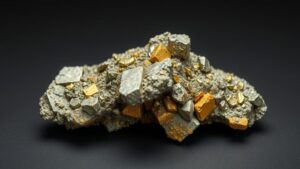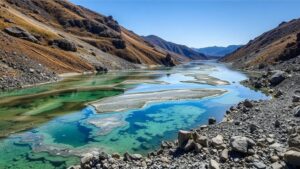The Discovery of the Nome Offshore Gold Deposits in Alaska
The Discovery of the Nome Offshore Gold Deposits in Alaska
The Nome offshore gold deposits represent a significant chapter in the history of gold mining in Alaska. Discovered in the late 19th century, these deposits not only transformed the local economy but also had lasting impacts on mining practices and coastal exploration. Understanding the history and significance of these gold deposits provides a fascinating insight into both the past challenges and the modern advancements in mineral extraction.
Historical Context
The rush for gold in the United States peaked between the 1840s and 1900s. By the time prospectors arrived in Nome, Alaska, in 1898, a frenzy similar to that of the California Gold Rush was underway. The discovery of gold along the beaches and rivers originally attracted over 10,000 prospectors to the region within a short period.
Nome’s reputation as a mining hotspot was solidified when, in 1899, A.E. Hummel and his crew found gold just offshore while driving a scow into the water. This watershed moment marked the beginning of offshore gold mining and significantly altered methods of extraction in mineral-rich regions.
The Geology of Nome
The geology of the Nome region is characterized by a unique combination of glacial, fluvial, and coastal processes that led to the deposition of gold. The prevailing geological formations consist of sandy deposits derived from ancient river systems, later tamed by glacial movements. The offshore deposits are primarily attributed to erosion and natural weathering of gold-bearing gravels.
- The proximity of larger gold deposits inland led to the selective erosion that transported gold particles downstream to the beaches.
- Studies indicate that gold found in Nome is predominantly native gold, about 90% of which exists in the form of nuggets or flakes.
Techniques and Technologies in Offshore Gold Mining
Mining techniques evolving from the Nome gold rush laid the groundwork for modern practices. Early methods involved manual operations using pans to sift through sediments along the beaches. As demand increased, more sophisticated techniques began to emerge.
- In the 1930s, dredging equipment was introduced, allowing miners to extract larger quantities of gold efficiently.
- Today, advanced technology, including underwater robots and remote sensing, enhances the precision and efficiency of gold extraction.
Environmental Considerations
The extraction of gold, particularly offshore, raises significant environmental concerns. The disturbance of marine ecosystems, potential sedimentation, and pollution from mining residues require strict regulatory oversight.
Recent studies suggest that responsible mining practices can mitigate these effects. For example, introducing regulations that require real-time environmental monitoring can help ensure that mining activities do not harm marine life. Also, restoration efforts post-mining are critical in maintaining the ecological balance.
Modern Developments and Future Prospects
As of 2023, Nome continues to attract mining interest with ongoing exploration efforts and technological innovations aimed at improving yields while minimizing environmental impacts. The introduction of sustainable mining practices is becoming increasingly crucial as the industry faces pressures from both the market and environmental advocacy groups.
According to the Alaska Department of Natural Resources, the potential size of the offshore gold deposits is still being evaluated, with estimates suggesting that they may significantly contribute to the economy for decades to come. Investment in research and development of eco-friendly mining technologies may also provide opportunities for sustainable development in the region.
Conclusion
The discovery of the Nome offshore gold deposits marked a pivotal moment in Alaskas mining history. From humble beginnings with hand tools to the modern application of advanced technologies, the journey reflects ongoing innovations within the industry. Also to economic benefits, the careful stewardship of natural resources ensures that future generations can continue to benefit from these rich deposits.
For students, researchers, and industry professionals alike, understanding the implications of the Nome gold discovery is crucial. It serves as a case study in balancing economic prosperity with environmental responsibility in the pursuit of natural resources.


